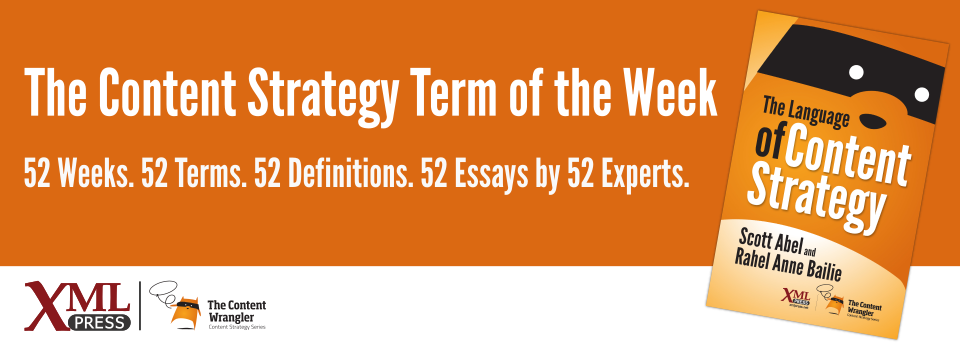What is it?
The extent to which content is available, understandable, and usable by all, regardless of disabilities or impairments such as sensory, physical, cognitive, intellectual, or situational.
Why is it important?
Accessibility is a W3C Web standard and, in many countries, is the law. Accessible content is easier to use and maintain, more search-engine friendly, and increases usability and understanding.
Why does a content strategist need to know this?
One of the main tenets of technical communication is to know your audience, but this has not always been valued on web projects. When developers only tested sites in Internet Explorer on large monitors at small resolutions, their audiences suffered a less-than-stellar experience when using another browser, a mobile device, or larger fonts.
While you may want to create content that is available, understandable, and usable, the chances are good that you’re ignoring as much as 20% of your audience.
How can you make content more available to people with disabilities? Accessibility happens during design, development, and delivery. Many content strategy best practices already address accessibility:
-
Use headings (with tags or styles, not manual formatting)
-
Use short sentences (fewer than 25 words) and short paragraphs (no more than three sentences)
-
Write in second person, active voice, and present tense
-
Use the best word, not the longest
Take these additional steps to create accessible formatting and markup:
-
Left-justify text for left-to-right languages and right-justify for right-to-left languages
-
Use the correct color contrast (3:1 for large text and 4.5:1 for other text and images)
-
Use relative font sizes
-
Restrict the number of font families to three
-
Size all images consistently
-
Make sure that online deliverables have full keyboard functionality
-
Add the alt attribute to images (unless they’re only decorative)
-
Add captions and transcripts to videos
-
Define the :focus pseudo-class in the cascading style sheet (CSS)
Creating accessible content starts with the initial design and continues through the development process. If you wait until the project is finished, it costs more. Roughly speaking, making a change during development costs $25 USD; during QA, $500 USD; after release, $15,000 USD.

